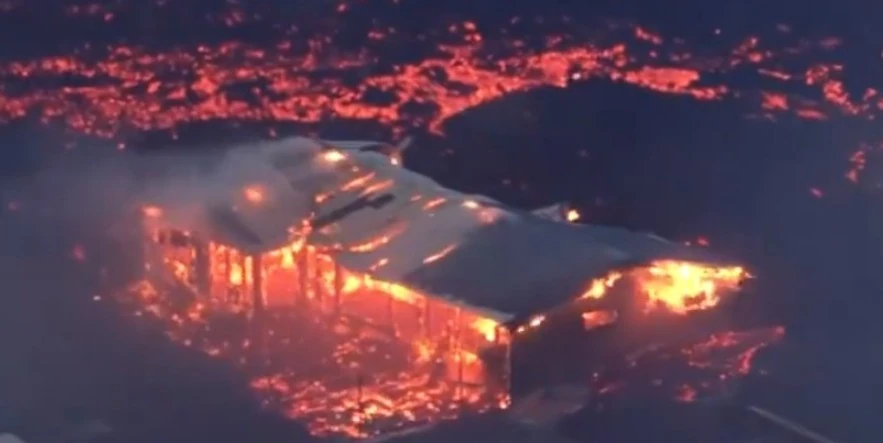Reduced power of eruption, but new cracks may be appearing within Grindavik, Iceland

A day after a new volcanic eruption started near the evacuated city of Grindavik, Iceland, authorities are reporting a reduced flow of lava. While it’s unclear how long the eruption will last, they warn new cracks may be appearing on the surface within the city in the next few days.
The Icelandic Met Office (IMO) updated the situation regarding the volcanic eruption on the Reykjanes Peninsula, Iceland, at 14:20 UTC on January 15, 2024.
According to the latest observations from web cameras, there has been a noticeable reduction in the lava flow from the fissures that opened yesterday. The flow from the southern fissure, which emerged near the town of Grindavík, appears to have ceased. Currently, the predominant lava flow direction is southwest, following the constructed levee, which has effectively contained the lava.
The duration of this volcanic eruption remains uncertain. A decline in seismic activity has been noted, and GPS measurements indicate a decrease in ground movement in the area. However, continued movement is detected in the southern part of the magma tunnel beneath Grindavík. Over the past 24 hours, sliding within the town limits has reached up to 1.4 m (4.6 feet), with multiple new and expanding cracks observed. These developments suggest the possibility of new surface cracks forming in the coming days.
First images from the eruption pic.twitter.com/qNq8tOus87
— Bjorn Steinbekk (@BSteinbekk) January 14, 2024
I am devastated by todays event. I considered not posting images that show terrible tragedy to people’s homes. I want to make it clear that if there are any news outlets out there that need free content to raise awareness, let me know, nobody should make money on this! pic.twitter.com/CaNih72v6Z
— Bjorn Steinbekk (@BSteinbekk) January 14, 2024
The eruption centers remain high-risk zones, with the unpredictability of new fissures opening without warning, as evidenced by the recent crack formation at the Grindavík border. No precursory signals were detected by measuring instruments for this specific eruption event.
Wind conditions at the volcano site have been relatively calm, with a slow north-easterly wind, causing gas pollution to drift southwest towards the sea. However, wind speeds are expected to increase, potentially altering the direction of gas dispersion. The Norwegian Meteorological Agency, in collaboration with civil defense and emergency responders, continues to monitor the situation closely.
A consultation meeting, organized by the Norwegian Meteorological Agency, was held this morning to review the collected data regarding the eruption. In the coming days, ongoing measurements and data gathering will aid in the development of computational models.
These models aim to enhance the understanding of the events leading up to the eruption and to predict its probable course. Comparisons are being made with the sequence of events on December 18 and the current eruption to better understand regional changes and assess likely future scenarios.
Read more:
References:
1 Dregur úr krafti eldgossins – IMO – January 15, 2024
Featured image credit: Bjorn Steinbekk (stillshot)

Commenting rules and guidelines
We value the thoughts and opinions of our readers and welcome healthy discussions on our website. In order to maintain a respectful and positive community, we ask that all commenters follow these rules.